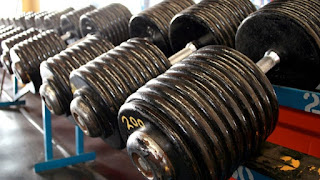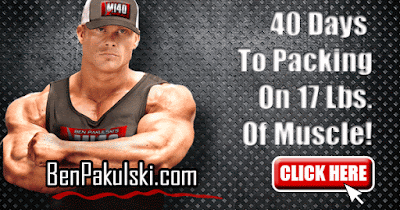If
you ask me, really well developed hamstrings are a benchmark of a great athlete.
If I see someone with great hamstrings, I begin to assume a bunch of things:
1.
They know what they’re doing
2.
They are a great athlete.
3.
They look awesome
4.
They’re very fit.
Might
just be me, but because so few people have good hamstring development, I use it
as one of my indicators of fitness and exercise knowledge. The reason most
people lack hamstrings is because they never get them anywhere near their
shortest position. I watch people on a daily basis yank their
butts
in the air, not knowingly actually taking the hamstring out of the movement as
they do so!
The
minute your butt goes in the air at all, less tension is placed on the
hamstring. In order for maximum tension and maximum shortening, the hip must be
extended; i.e., your butt needs to stay locked down.
Next
time you do a lying leg curl, try to do it with NO/MINIMAL butt movement. It
will probably feel impossible at first. This can be a tough one to get into
because a large portion of the population lacks flexibility so this might be a
bit tough at first. Give it a try though; the contraction will blow your mind.
Execution:
Lift
your chest off the pad as much as is comfortable while leaving your hips
pressed against the pad. The goal is to try to align your shoulders, hips and knees
in a straight line (or knees slightly extended behind your hips). Maintain this
position without extraneous movement throughout the entire set. This, in fact,
shortens the hamstring muscles from BOTH ends, thereby getting it maximally
shortened. The feeling and contraction is unreal!
In
fact, if you want to feel it for yourself right now, stand up, and hold onto something
for balance. Keeping your chest up and without leaning forward at all, I want
you to simply extend one of your legs behind you until you feel your glute contract.
Got it?
Now,
curl your leg (bring your heel up toward your bum). Do not change anything else.
It’s important that that knee stay behind your hip and your glute stays contracted.
(If you have a hard time contracting your glute in that position, your hip
flexors are way too tight and this is too advanced for you right now.) If you
got that right, regardless of your current fitness level, you are going to be saying
“Wow! I’ve never felt a contraction like that in my hamstrings before.” The crazy
part is, it may also appear to be a rather short Range of Motion, right?
“WICKED
STUFF, BPak!”








